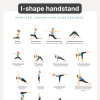
Mindful eating is mindful living. It’s a practice that we do everyday to learn more about our thoughts, emotions, feelings, our actions, and reactions in order to cultivate health and contentment. And we use the same attitudes and qualities of mindfulness in how we approach food, our bodies, and our entire lives.
Mindful eating counts heavily on the connection we have with our body, such as listening to our body cues of hunger, fullness, taste and satiety, and actively using our five senses while eating: sight, smell, touch, sound and taste.
Connecting with our Body is a Natural Capacity
This is not hard as this connection with the body is an innate capacity, babies and young children do actually have that connection with their body cues of having enough. We often see babies stop drinking before finishing the amount of milk that is recommended for their age, and we also see young children leave food or ice cream on their plates and just walk away saying, “I’m full.”
Unfortunately, this natural connection weakens over time in part due to conditioning. Oftentimes as children grow up, parents tell them that they have to finish their food even if they have had enough. There is also a growing trend of families having their meals in front of the TV, or not having proper meal times, and just eating in the car between their after school activities or while doing their homework.
Eating also becomes an activity a lot of people do without much thought or attention. They don’t pay attention to what they eat or when their body is telling them to stop eating. They don’t distinguish between physical hunger and other triggers to eat.
The good news is that we can restore this ability with mindfulness practices. A consistent practice of mindfulness meditation is key to achieve this connection with our body and observe our thoughts and emotions and also identify our eating triggers and manage them. And the great new is you can start taking small steps right away that can help you eat more mindfully. Let’s take a look at some of those tips.
Here are 6 tips you can practice for mindful eating
1. Eat while justing eating
The first, and most important, thing I’d like to start with is that in order to eat mindfully, you should plan to just eat– as in eating without doing anything else aside from eating. That is without watching TV or working or driving, for example.
2. Tune inwards
Mindful eating actually begins before you are ready to eat. It starts when you first feel the urge to eat. When that feeling comes up, with your eyes closed or open, take three deep breaths and observe your thoughts, feelings and physical sensations in your body. Notice if you experience any sensations of physical hunger, and if so, rate how hungry you are.
Then notice what are you hungry for, and if there’s a particular type of food you would like to have, then ask yourself will this food nourish my body and support my health? Will this food give me pleasure?
Then if you decided to eat…
3. Use all of your senses:
- Sight: With the food in front of you, notice what does it look like? Pay attention to the shape, colour, size…etc
- Smell: Then take a moment to smell the food, paying attention to the layers of aroma as they go through your nose. Really examine the food as if you’re seeing it and smelling it for the very first time
- Touch, sound & taste: As you bring the food to your mouth, slow down and chew slowly with your mind focusing on the process. Be aware of the texture of the food, the sound of the food while you chew and the taste of the food as it changes while you chew. Just don’t do anything else while you’re chewing, simply chew and pay attention.
4. Chew slowly
Keep chewing while resisting the impulse to swallow, and when you decide to swallow, pay attention to how this feels in your body and to the intention of swallowing. And as you swallow feel the food moving through the throat, esophagus and resting in your stomach.
After you swallow, rest for few seconds before you take the next bite.
5. Pay attention to your thoughts, emotions and distractions
While you are eating become aware of recurring thoughts or emotions, and when you notice that your mind is wandering, investigate your distraction and gently bring your attention back to eating.
6. Keep examining your hunger, fullness, taste & satiety
While eating gently notice your hunger and satiety levels, and then give yourself permission to stop eating when your body tells you so, when you no longer enjoy the taste as much, when you’re no longer physically hungry and when your stomach feels comfortably full and your satiety feeling gives you the signal of energy and well being.
With time and consistent practice, you can practice mindful eating, without closing your eyes, and while around people and no one will notice what you are doing.
Mastering the Art of Moderation
Each day should include moderate amounts of food that brings you pleasure. Moderation allows us to live at peace with our food, knowing that eating small amounts of the less healthy food, won’t be enough to disrupt the healthy relationship.
And with time and practice, you will master the art of moderation, you can really enjoy few bites of your favorite dessert and feel satisfied with few chips or crackers for a snack.
You can attend big holiday dinners without anxiety, and you can go to parties and buffets where multiple delicious foods are there, while feeling a sense of freedom that comes from knowing that you have mastered the art of moderation and you’re not going to overdo it, it comes from knowing that you can eat smaller portions and yet feel more satisfied.
You may not be able to do all of this today or by next week or month, but if you would like to learn more about mindful eating, check out our course where you will learn the practices and the skills to make these experiences your norm. You will lose weight if that’s your intention and maintain it without feeling deprived and without missing out on everything you love about eating.
Other Applications of Mindful Eating
Mindful eating extends beyond just eating, it also includes:
- Planning — Being mindful while you decide on what to eat: look up recipes, make your grocery list, and being mindful while you are shopping for your ingredients.
- Preparing for meals — Pay attention while you’re preparing your meal, washing the food, chopping, mixing ingredients, and how you present your food and set up the table when eating mindfully.
- Cleaning up — Be mindful while you clean up after you finish eating, clearing the table, storing away leftover food, composting food or garbage, and washing the dishes.










